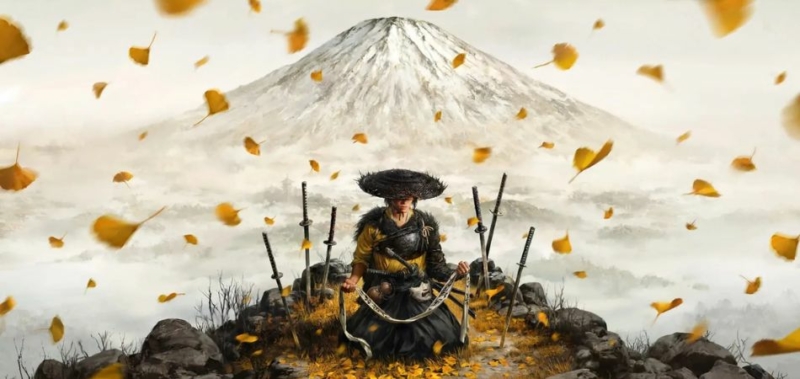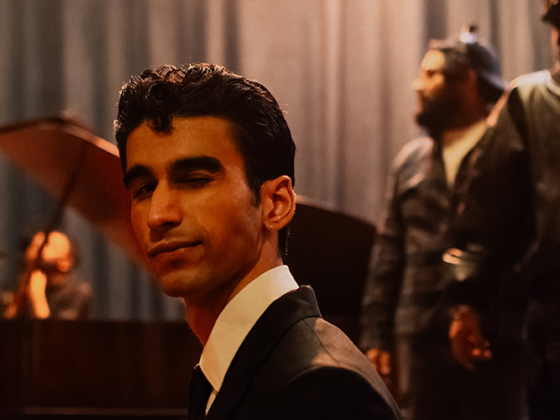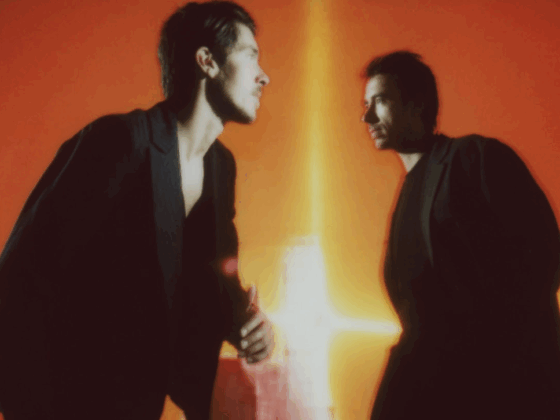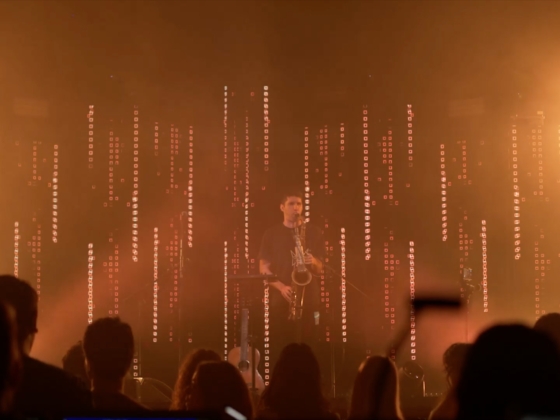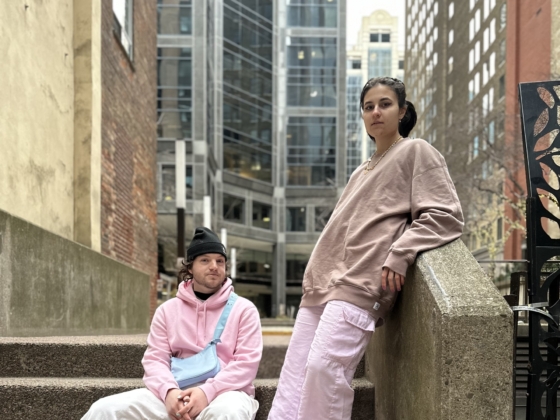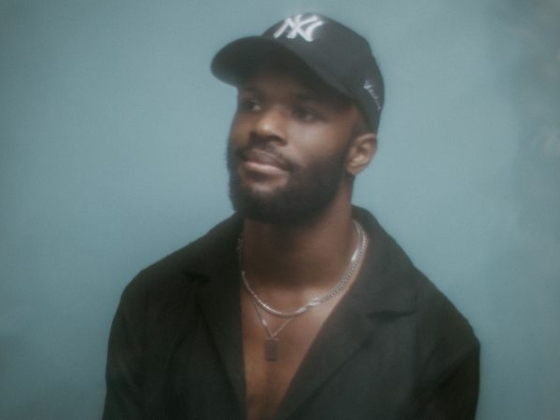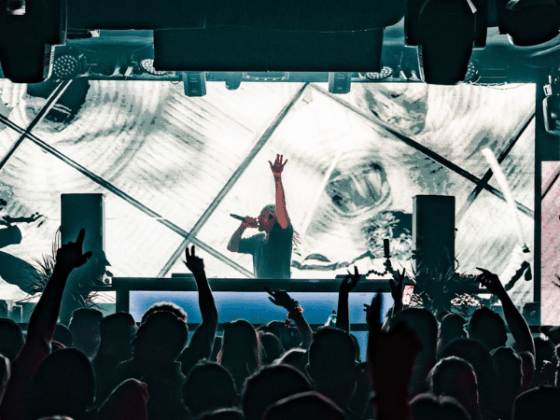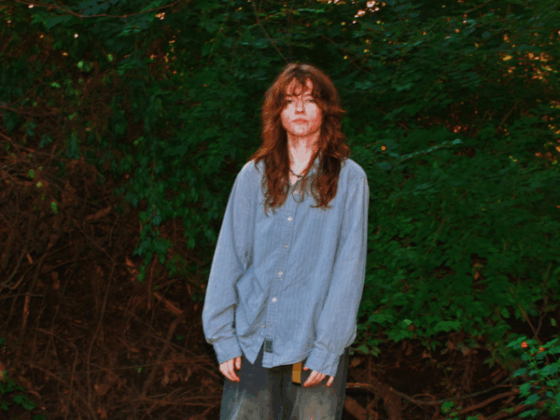A stunning blend of traditional Japanese instruments, a wild west mentality, and thoughtful musicianship have all combined to create the lush and atmospheric soundtrack for Ghost of Yōtei. We were fortunate enough to have the opportunity to sit down and interview Brad Meyer, the audio director for Suckerpunch Studios and Toma Otowa, the composer behind the stunning melodies featured in the Ghost of Yōtei soundtrack.
We’re here to talk about the Ghost of Yōtei, a highly anticipated, standalone sequel to Ghost of Tsushima. This series has been alive and well for years now and is setting the bar, and a new standard, for blending traditional Japanese elements with modern audio technology. In the first installment of the series, instruments like the Shamisen, Taiko drums, Biwa, and Furin were used to help develop a regional sound reminiscent of southern Japan. However, this game is set in modern day Hokkaido Japan, the northernmost island. How did the geography impact the culturally significant instruments that were used?
Brad Meyer: We were taking it holistically, defining our sound palettes for the story we wanted to tell, which was Atsu’s journey in Ezo at the time. Ezo in 1603, what we now know as Hokkaido, was outside of Japan. So it was kind of this lawless, wild west frontier. So we kind of took that as this kind of notion of, "What if for the score, we tried doing almost a wild-west influenced score, but through the lens of futile Japan." We’ve got some western instruments that just feel right here. Acoustic guitar, lap steel guitar, and string quartet, rather than a full string ensemble.
Then on the Japanese side we actually had a lot of the same instruments. Shamisen is obviously the most important for this score because it is Atsu’s instrument. She carries it on her back, her mother taught her how to play, so there’s strong ties, emotionally, to that instrument. Of course, Shakuhachi is such an emotionally evocative instrument. We still had biwa and koto. We used Kokyu this time… and we did do a little bit of recording and work for the Ainu in the game, recording Tonkori and Mukkuri which are traditional Ainu instruments.
Toma Otowa: When I first was offered to get on board with this game, the first idea that sort of took me by surprise was, "Hey we want to create this futile Japan, but in the wild west sense." I came to the states when I was 16 as a foreign exchange student and I went to Oklahoma. My Japanese-ness is woven into my DNA and coming to the states for the first time was surprising, but I had a great experience in Oklahoma. I feel like, looking back, those experiences of me coming from Japan and sort of being accepted in Western culture and slowly learning the culture, I really was meant to do this project like 40 years later, 35 years later. So everything, all the dots connected.
The little seeds from like 35 years ago have kind of come together on this project of Ghost of Yōtei, where I get to actually express my Japanese side of the taste with shamisen, like Brad said, shakuhachi, biwa, and kokyu with the amazing musicians in Nashville who played lap steel guitar, acoustic guitar, and nylon guitar, to express the wild west. Sort of combining those two styles, it was great fun.
Absolutely, and they blend together so beautifully. I saw today that two more singles were released off of the soundtrack. I listened to them this morning. They are stunning, seriously they are beautiful. So, hearing those two things meld together, I don’t know if most people would go, ‘Oh yeah those two go together so smoothly, they’re meant to be,’ but they really are.
Brad: Thank you, yeah, we really didn’t know either! That was part of the challenge. It was funny, because when we first heard Toma’s demos it was just like, "Ok, yeah! We think this is gonna work!" But it wasn’t until we were recording all the instruments together that it really hit us just how magical this combination was. Hearing instruments that have probably never been played together, together in the score. My favorite, I think, was the lap steel and the biwa together, it was just like "holy cow, this sounds incredible." I don’t think these two instruments have ever been on the same page of music before. It was very special, it was definitely something that was a little bit of a leap of faith, I think. We think this is gonna work, Toma’s music sounds great, and once we actually finished recording and cutting the game, it’s been great ever since I guess.
That’s actually a great segue into my follow up question for that. Did you have any challenges finding instrumentalists who specialize in any of these instruments?
Brad: One of the huge benefits of working for a team my PlayStation is, our music team. They’re the best. They have experience across so many broad kinds of genres and games, and so you know on God of War, they know where you can find the singers that can sing in old Nordic. They source people all over the world for all kinds of skills and we even had that on Ghost of Tsushima for the director's cut. We wanted to add some Mongolian throat singing, and you know, they found the amazing throat singer out in China that we then recorded
Some of them like Oki Kano, who is the tonkori player, we actually were using his music as reference when we were playing the game, kind of early, early prototype. It’s this beautiful guitar-like music so it had that feeling that we were going for, but it was also this thing that was native to Hokkaido.
Toma: As for soloists and musicians, I feel like this little spoiled child who was fed by the silver spoon. Say hey, ask for an orchestra, we're gonna use London and we're gonna record that there. I’m like, "oh that’s wonderful." As for the soloists, we got the best in Japan, like "oh that's really great." As for the guitar and lap steel, we have these amazing guys in Nashville. So I feel like I was given the best of each location and regions of what they can offer. To be able to combine that in writing was such an honor. It came out really, really great. It was even more than I imagined or expected. It was just really beyond how they blended both together.
One of the most important elements in this game is, of course, the action, the swordplay and the exploration in the game itself. Brad I read somewhere, and correct [me] if I’m wrong, that you took on the role of a foley artist for the first game where you were able to slice fruit, suspend the swords, and strike them against each other. Did you have the opportunity to use those techniques again?
Brad: Yeah, we definitely did, but I think the benefit of the project here is that since we worked on Ghost of Tsushima, PlayStation has actually hired a foley artist and foley mixers, so we worked with them extensively and they’re, again, two of the best in the industry. Joanna Fang and Blake Collins, we worked with them to get every weapon, every outfit, everything … We were with them in the foley studio kind of building those things from real world materials.
Talking about the shamisen being such an important part of Atsu’s identity, my lead sound designer Josh Lord had the great idea of like, "Well what if we incorporate shamisen into our UI sounds, into the interface sounds?’"So that we have the core identity of Atsu in the identity of the interface and what the player’s doing in the menu.
It's incredible to hear the behind the scenes, there's so many details and complex layers when it comes to building, not just the soundtrack, but all of it. To know that even in the menu screen, you know someone's just pausing for a moment so they can go whatever, ‘well yeah, that also has that intention and thought as well.’
This game is set 300 years after our first iteration of the game, and new weaponry was developed during that time. I know that some of the weaponry such as the katana and grappling hooks carried over, but when it came to recording sounds like the matchlock gun, did that have a different approach to it, or were there different considerations in mind?
Brad: We really had to overhaul our entire combat system because of the new complexity. Jin had one weapon, and now you have five times as many weapons. Really, six or seven times once you bring in the firearms. It definitely kind of caused us to rethink the way we did combat sound design for the Ghost of Tsushima and change that for Ghost of Yōtei. So we came up with a really great plan I think has worked beautifully where, working with Blake and Joanna in San Diego at the foley stage, we crafted these recipes for every weapon and kind of what props we would use to make them sound as we needed them for swings and impacts.
The weapon that is attacking has a sound, and the weapon that is defending has a sound, so you also get a much richer kind of soundtrack for combat itself. It's also more positional, so if you’re listening in headphones or you have a nice system, you can really hear things as they’re moving around. Versus Ghost of Tsushima, everything was always on the katana. This provides much more width and breadth to the soundtrack and sound design during combat.
Lauren: This series is truly expansive and envelopes the player even more so now than the original. That’s created through those atmospheric elements that you were talking about but also through the compositions, being able to create this world. So how do you approach selecting musical modes, and styles, when you’re influencing the player's emotions and senses, such as during exploration versus combat. Toma, how did you approach that?
Toma: As for combat music, you need to have several layers of intensity levels. We did an interactive system where I would write a basic, natural flow of music in three different sections. The first one is starting to infiltrate, and then going into the sort of alert, alarmed section where enemies start to arrive but it's not too intense. Then the last section to be really sort of like, "oh my god, everybody's everywhere and they’re coming at you." So intensity level, we sort of structured intensity level by three levels and then we would fill in and double multiple different instruments for interactive use so that as the battle gets more intense, the more instrumental stems could come in or to switch around and we did use a lot of the soloist’s improvisation.
Brad: So the idea for the improv for our game came from Pete Scaturro, who's on our music team, and I think he might have done a little bit of it with God of War. The thought of doing improv is that, well two things: one, this game is immense and it is humongous and it is really hard to score a game that could take players anywhere from twenty-five to one hundred hours to get through and to keep the music always fresh and interesting. The other thing is that Toma writes incredibly beautiful, wonderfully memorable melodies, and that to us is really the core of the music for the game.
So we came up with this idea of like, we could write improv maps and have our soloists kind of perform it. So it would basically start with several measures of one of these melodies that Toma wrote, so they would start playing that and then they would just kind of improvise from that melody and create completely new kinds of tapestries of sound that we could use… A lot of what you hear when you’re just kind of exploring out in the world, riding your horse across all of Ezo kind of came from some of those sessions.
Toma: As for the exploration section, the tracks are completely contrary to the combat. As you’ve seen, the whole scenic view and graphics of nature in Hokkaido that they've created was just stunning and so beautiful. I wanted to make sure that my music is sort of like guiding everybody who plays the music to this world of beauty and the sacredness of nature. You know, every tree, every wind, the air, the mountains, the water, you know, it's got spirit in it. My job, I feel like, is to sort of invite everybody to sort of sit in this Ghost of Yōtei world on a little bench in nature, in the national park, where you could just sit your soul there and just kind of be healed.
Speaking of different modes and different explorations, there are two new modes. Not only the Kurosawa from the original, there are also two more inspired by different film styles. So how did that impact your composition or your approach to those modes?
Brad: Kurosawa is such a big influence on all of us and kind of what we’ve been trying to craft with the Ghost franchise. Takashi Miike was very similar in that, you know, we used 13 Assassins as kind of the pinnacle of "This is what grounded samurai content could look like." With Watanabe mode, it is an audio-driven mode, which is kind of cool.
We worked directly with Watanabe-san and his music production company, Piano Incorporated. They gave us, I think, four original tracks and then we gave them some of Toma’s music and they remixed Atsu's theme, and the Yōtei Six Theme, and so that was super cool too, hearing the melodies that Toma has written that appear throughout all of the game that are two of the most evocative melodies about our hero and our antagonists in this lo-fi style.
I noticed that Clare Uchima has been on both soundtracks. Is there a different approach when either composing or recording with a soloist, with a specific instrumentalist, or with ensemble? How do those approaches differ?
Brad: Working with Clare Uchima specifically was kind of a no-brainer, she did such a great job with Ghost of Tsushima and we knew we wanted something similar, kind of evocative lyrics that are so soulful that they tug at your heart. To me, she seems like the kind of person where you don’t need to give her much direction, she hears the music and she knows what to do.
The one thing that I did want to mention is that this game was a little bit unique because of the number of soloists that we use. In mixing the score, our principal engineer Kellogg Boynton, was very cognisant … He was doing a lot of really cool kinds of recording and mixing techniques to always ensure that the soloists were what was up front and on top because, to us, was the most important thing. That’s where so much of the emotional storytelling of the music came from.
Toma: Clare’s voice has this reserved emotion when she expresses it. She can really sing out to express full-on emotions, but at the same time she’s so great at singing the pain and the sorrow as she reserves her emotions, just like many Japanese do, and I do. I think Atsu kind of is that way too. She doesn’t really express her sadness all that much because she’s kind of holding it in. I felt like the way she sang and expressed was really a perfect match to the character of Atsu. Clare’s so versatile obviously, she blows my mind, and she’s also very sweet. She came up with these brilliant lyrics that match the whole story of Ghost of Yōtei.
It creates such a lush texture underneath, it really does form this foundation. Like you were saying, letting the soloists improvise but also really tell the story as well and letting the vocalists do the same thing. It just makes such a gorgeous, atmospheric soundtrack.
Stream the Ghost of Yōtei soundtrack here and check out Ghost of Yōtei when the game debuts on October 2nd, 2025.

